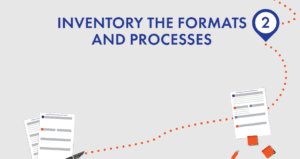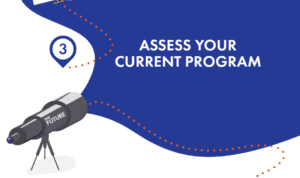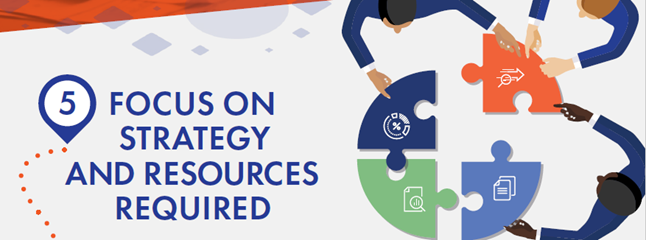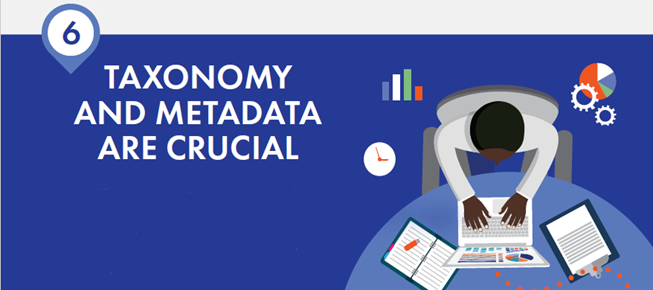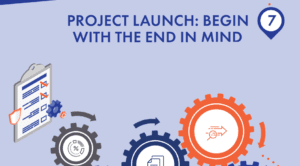
Have you ever tried driving around a new city without a map or directions to guide you to your destination? Trying to achieve compliance without a strong integrated information management plan produces similar results— a frustrating journey without an end in sight.
A strong integrated information management plan is like a map guiding your organization to remain compliant, competitive, and in control. Its importance can’t be understated! However, not all organizations have one in place, or maybe it hasn’t been updated in quite some time.
This comprehensive roadmap outlines ten essential steps to help you get started on building or updating your organization’s integrated information plan. Use it as a guide in assessing your organization’s information priorities and turn governance and retention plans into reality.
Step 1: Map Your Journey
As with any initiative, you have to start somewhere. In this case, where you want to build a strategic roadmap and a comprehensive information management plan, you need to begin by outlining what your driving influences and desired outcomes are and work backward from there. To do this, you need to understand the people, processes, and goals affecting the information management plan to determine how you’ll arrive at your final destination on time and on budget.
Step 2: Inventory the Formats and Processes

Your organization could be paper-intensive, digital-first, or somewhere in between. Assessing your format types and associated content will establish what you have to work with and where the gaps are so you can begin to plan for those according to priorities and goals.
Step 3: Assess Your Current Program

Take a look at your current information management plan. It’s likely that it has parts that are working well and others that are not. The goal in this step is to assess what is working and why, and for the parts that need work, assess why they’re not satisfactory and begin the process of finding more effective solutions that offer continued optimization.
Step 4: Determine Timeline and Budget
Organizations often need to adopt new information management plans to address a regulatory issue or enable easier access to information. Plan to align your timeline and budget with these affected influencers to ensure success. You might also discuss pooling your budget together with other benefiting departments to enable more value for all.
Step 5: Focus on Strategy and Resources Required
Successful outcomes require strategic oversight with a clear understanding of competing needs and priorities across the organization. In this step, you should consider what skills and time you can dedicate to the project, what resources are available in-house, and enlist the help of experts when needed and with a designated budget.

Beyond Storage – A Comprehensive Information Management Checklist
Organizations of all kinds and sizes are finding themselves faced with an array of information management challenges. Some of these challenges, like the transformation of information technologies and the growth of data sets, have remained relatively unchanged for years.
Step 6: Include a Focus on Taxonomy and Metadata
Regardless of how you store your information, retrieval is the trickiest part to master. Make the development, mapping, and application of a consistent taxonomy and metadata schema a project priority to ensure project and future process success.
Step 7: Project Launch – Begin with the End in Mind
As stated at the beginning of this article, when it comes time to plan the launch of your project, you need to start with the outcomes and work backward to plan the ‘how’. Taking your current solution and shoehorning it into a new solution rarely works. What results from that approach are clunky systems that are poorly adopted with time and budget wasted. Avoid that mistake by starting off on the right foot.
Step 8: Considerations for Paper-Intensive Environments
One of the most important considerations when planning your integrated information management strategy is whether the right people can access the documents they need consistently. If there is a requirement for remote access to information, which is quite common with so many remote workers today, then your solution will likely involve some digitization. How much you need to digitize will depend on a variety of factors and objectives.
Step 9 – Considerations for Digital-First Environments
Many digital solutions are easy to adopt and tough to control. The results can be unorganized chaos that increases your compliance and security risks. To avoid that challenge, seek out a technology solution that can be implemented in a way that automates compliance and security.
Step 10 – Partner with the Experts.
You are not alone on this journey. Work with Access and we’ll help you complete an Assessment Checklist (included in the eBook below) and provide expert advice about the pros and cons of each option available. You can set your goals and prioritize the most important next steps together!
For more in-depth guidance on building an integrated information management strategy, check out our eBook, Integrated Information Management: A Roadmap with Considerations for Properly Assessing Your Organization’s Information Priorities.


